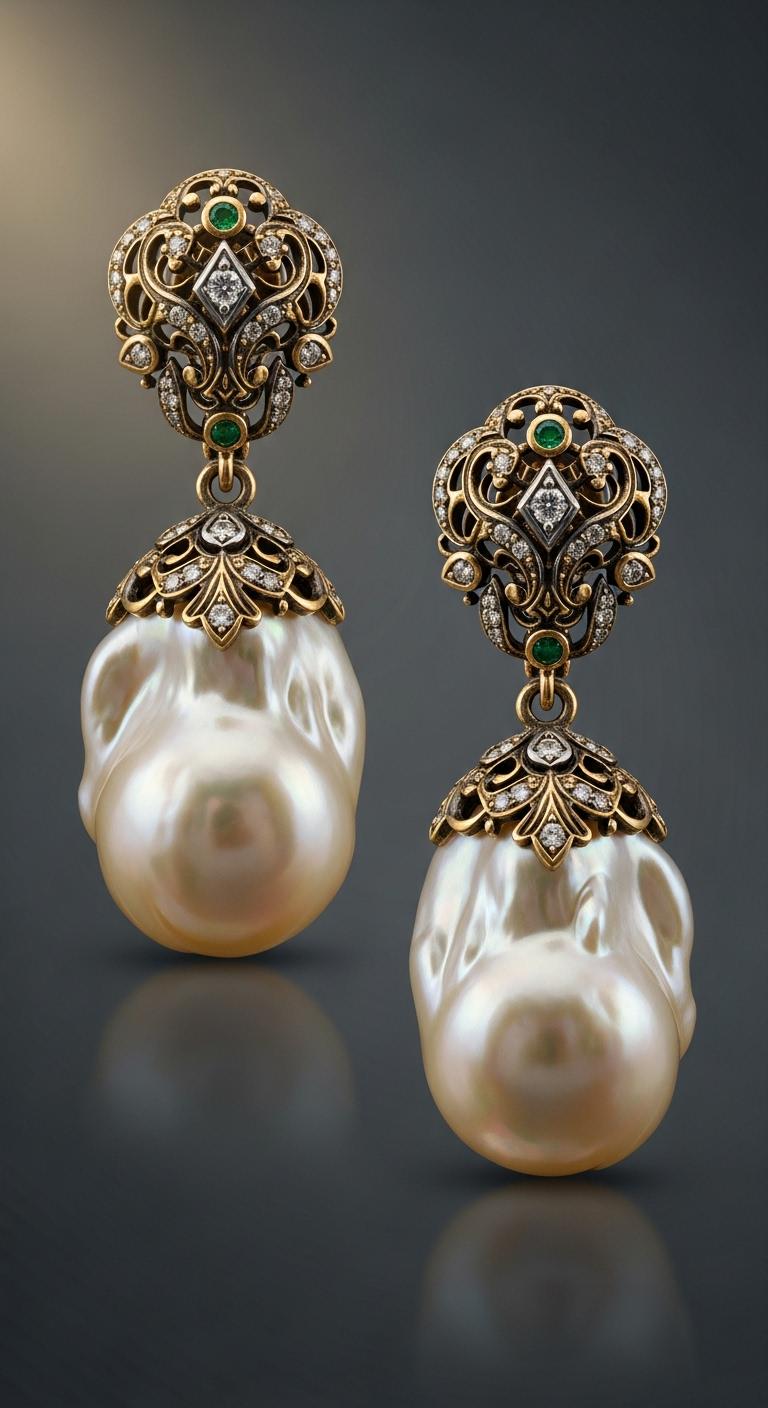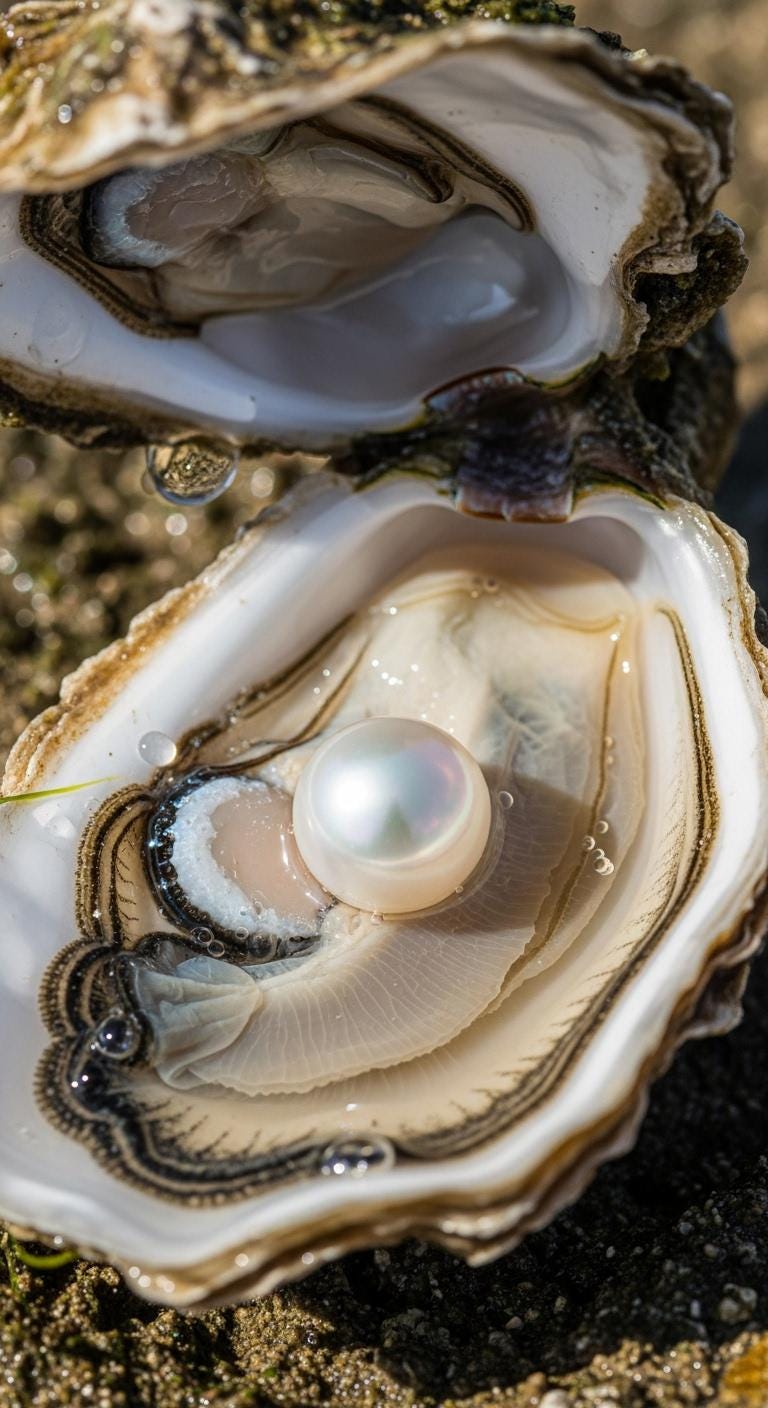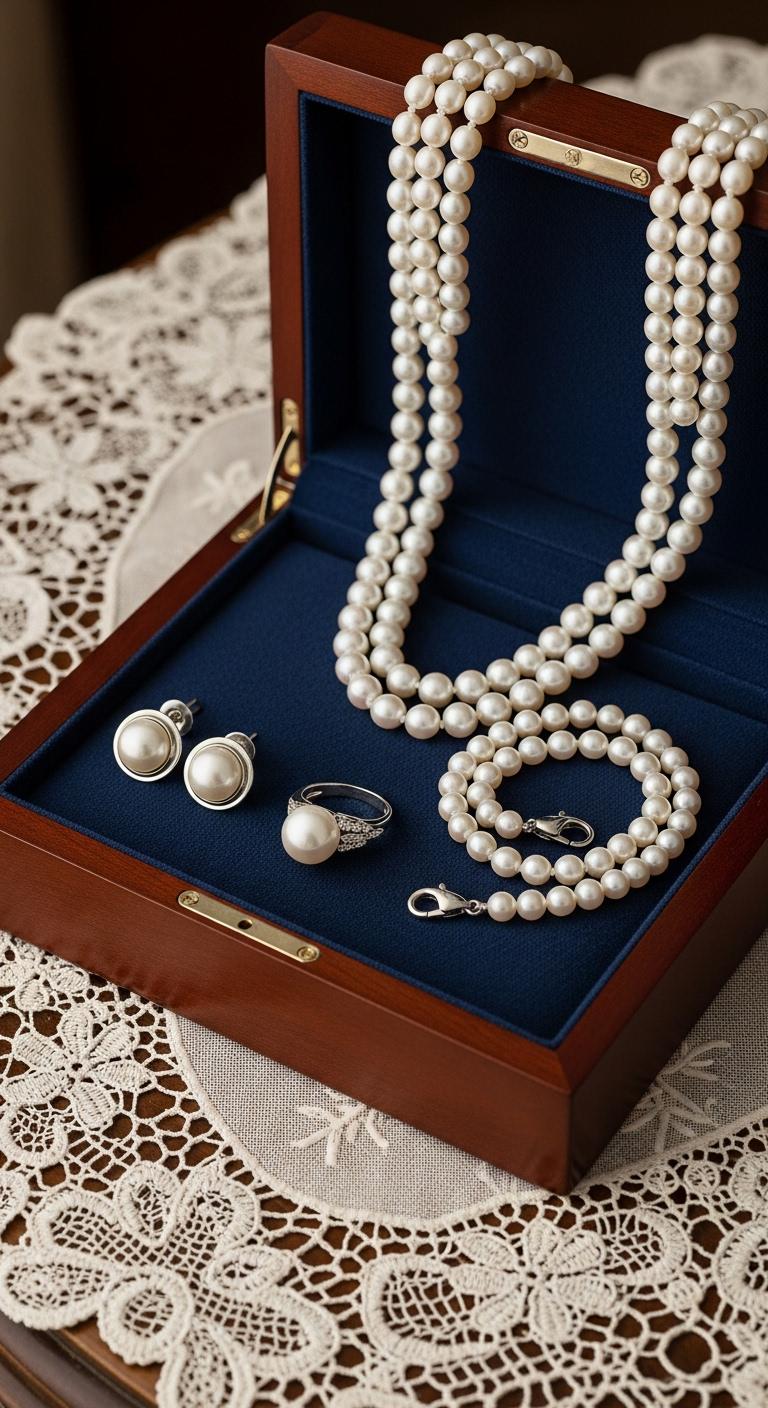All About Pearls: Meaning, History, Types & Timeless Beauty
Timeless, elegant, and born from nature’s artistry—pearls have captivated hearts for thousands of years. From their fascinating formation within ocean shells to their symbolism of purity, wisdom, and love, pearls remain one of the most treasured gems in the world. In this guide, you’ll discover the meaning and history behind pearls, how they’re made, the differences between real and faux varieties, and fun facts that reveal why these luminous gems are truly one of a kind.
Few gemstones evoke timeless elegance like the pearl. From ancient royalty to modern style icons, pearls have symbolized purity, wisdom, and understated luxury for centuries. Whether strung in a classic necklace, glowing softly from dainty gold drops, or paired with contemporary mixed metals in boho chic jewery designs, pearls continue to captivate jewelry lovers across generations.
The Meaning of Pearls
Pearls are often called the “Queen of Gems.”
Across cultures, they’ve symbolized:
- Purity & Love — Ancient brides wore pearls to represent honesty and loyalty.
- Wisdom & Serenity — Many cultures believed pearls held the power to calm emotions and promote clarity of mind.
- Transformation & Feminine Energy — Formed within living shells, pearls embody resilience, patience, and natural beauty born from time and care.
Today, pearls are worn not just for tradition but as an expression of timeless femininity and confidence—perfect for the modern woman who values grace and individuality.
A Brief History of Pearls
Pearls have been admired for thousands of years—long before humans ever discovered how to cut and polish other gemstones.
- Ancient Civilizations: In ancient Persia, China, and Egypt, natural pearls were treasured as rare gifts from the sea. They symbolized wealth, purity, and divine beauty. Cleopatra was said to have worn pearls to display her power and status.
- The Roman Empire: Pearls became a mark of nobility and prestige, often reserved for the elite. Roman women adorned themselves with pearls to showcase their family’s fortune.
- The Middle Ages & Renaissance: European royals and clergy wore pearls as emblems of virtue and faith. Portraits from this era often show queens and noblewomen adorned with pearl necklaces and crowns.
- The Victorian Era: Pearls were cherished as sentimental jewelry, frequently worn at weddings or given as tokens of love and remembrance.
Over the centuries, pearls have remained a symbol of refinement and grace—timeless treasures passed down through generations and beloved for their natural radiance.

Different Types of Pearls
Each pearl carries its own natural story—formed over time with unique shape, color, and character. These are the most beloved varieties found in fine and handcrafted jewelry today:
- Akoya Pearls Classic and perfectly round, Akoya pearls are celebrated for their high luster and flawless symmetry. Usually white or cream with soft pink or silver overtones, they embody timeless sophistication and are often seen in traditional pearl strands and studs.
- Freshwater Pearls Cultivated in freshwater mussels, these pearls come in a wide range of shapes and soft pastel hues—white, peach, pink, and lavender. Their romantic glow and affordability make them perfect for everyday wear and modern boho designs alike.
- South Sea Pearls Known as the “Queen of Pearls,” South Sea pearls are among the largest and rarest varieties. Their thick nacre gives them a luxurious satin luster and rich tones of white, silver, or gold. These pearls are prized for their natural elegance and luminous depth.
- Tahitian Pearls Exotic and mysterious, Tahitian pearls are famous for their dark, iridescent tones—charcoal grey, peacock green, silver-blue, and deep violet. Cultivated in French Polynesia, they radiate sophistication and individuality.
- Keshi Pearls Freeform and radiant, Keshi pearls form naturally without a nucleus during the culturing process. Their irregular shapes and metallic shimmer make them ideal for artistic, one-of-a-kind jewelry pieces with organic beauty.
- Baroque Pearls Distinctly irregular and full of personality, Baroque pearls highlight nature’s creativity. Their sculptural, flowing shapes make them favorites in modern, boho-chic, and statement jewelry collections.
- Ultra Baroque Pearls Even more expressive than standard Baroque pearls, Ultra Baroque varieties feature dramatic folds, ridges, and curves that reflect light beautifully. Each one is an unrepeatable masterpiece of texture and form.
- Button Pearls Rounded on one side and flat on the other, Button pearls sit gracefully against the skin—ideal for necklaces or pendants. They offer a soft, luminous sheen that pairs beautifully with both gold and silver settings.
- Rice Pearls Elongated and delicate, Rice pearls resemble tiny grains of rice. Their organic shapes add gentle movement and texture, making them a favorite for dainty strands, layered necklaces, and bohemian-inspired dangle designs.
- Petit Pearls Small and refined, Petit pearls (typically 2–4mm) bring understated elegance to minimalist or bridal jewelry. Their subtle radiance makes them perfect delicate accents for hoop earrings, layering in gold and silver pieces.
- Mother of Pearl While not a pearl itself, Mother of Pearl—also known as nacre—is the iridescent inner layer of the mollusk shell that forms real pearls. Valued for its shimmering surface and soft rainbow hues, it’s often used in pendants, inlays, and statement pieces for its natural luminosity and calming beauty.

How Long Does It Take to Make a Pearl?
Factors Affecting Growth:
A pearl’s final size, shape, and luster are influenced by its environment. Water temperature, the mollusk’s health and nutrition, and overall water quality all play important roles in determining how thick and luminous the nacre becomes.
- Freshwater Pearls: 6 months to 2 years
- Akoya Pearls: 10 months to 2 years
- Tahitian & South Sea Pearls: 2 to 5 years
Cultured vs. Natural Pearls:
Cultured pearls form when pearl farmers carefully introduce a small irritant—often a bead or piece of tissue—into the mollusk to encourage nacre production.
Natural pearls, on the other hand, develop spontaneously when an irritant such as a grain of sand or parasite enters the shell without human assistance. Depending on environmental conditions, pearls can grow anywhere from 1 millimeter to 4–5 millimeters per year, making each one a slow, organic work of art shaped by nature and time.
The longer a pearl takes to form, the thicker its nacre—and the deeper its luster. It’s truly nature’s slow art form.
Fun Facts About Pearls
- Pearls are the only gemstones created by living creatures.
- The world’s oldest known pearl is over 7,500 years old, discovered in a UAE archaeological site.
- June’s birthstone is the pearl, symbolizing purity, love, and new beginnings.
- “Mother of Pearl” refers to the iridescent inner shell lining that forms real pearls.
- No two natural pearls are ever identical—each one is as unique and individual as the person who wears it.

Faux Pearls: The Beautiful Alternatives
Faux or imitation pearls can still be stunning, especially when used in modern jewelry design.
Common types include:
- Glass Pearls: Glass beads coated with pearl essence for a realistic shine.
- Shell Pearls: Made from ground mother-of-pearl shell coated with lacquer.
- Plastic or Acrylic Pearls: Lightweight and affordable, perfect for bold statement pieces.
While they lack the organic feel and weight of real pearls, faux pearls allow for accessible, affordable, creative designs that still exude feminine elegance elegance.
Final Thoughts: The Enduring Allure of Pearls
From ancient legends to today’s modern jewelry boxes, pearls remain a symbol of elegance, beauty, and strength. Whether you love the refined charm of classic freshwater pearls or the boho-modern edge of baroque and keshi designs, there’s a pearl for every style and story.
Shop pearl drop and dangle earrings:
https://www.etsy.com/shop/MielJewelryBoutique?ref=dashboard-header§ion_id=54876228
Shop large and small pearl hoop earrings: https://www.etsy.com/shop/MielJewelryBoutique?ref=dashboard-header§ion_id=54876222
Shop pearl necklaces:
https://www.etsy.com/shop/MielJewelryBoutique?ref=dashboard-header§ion_id=44413434

